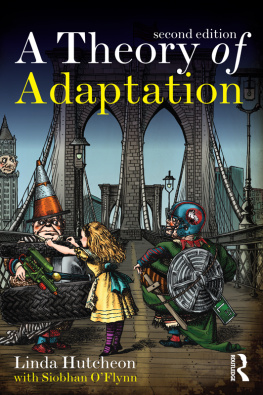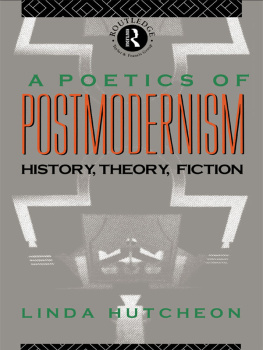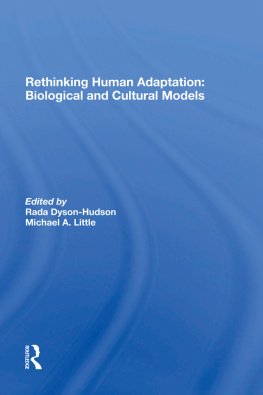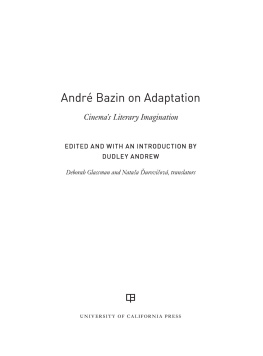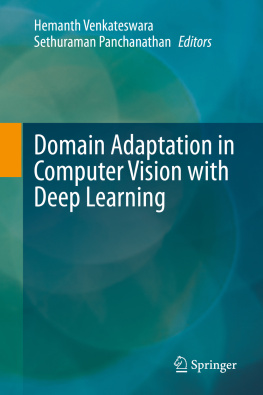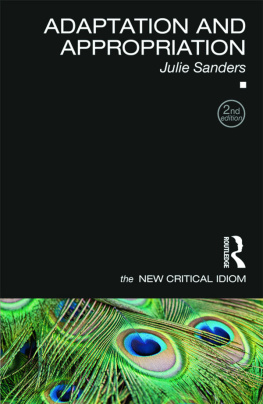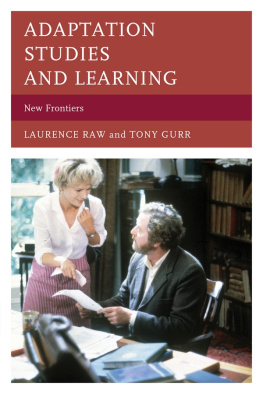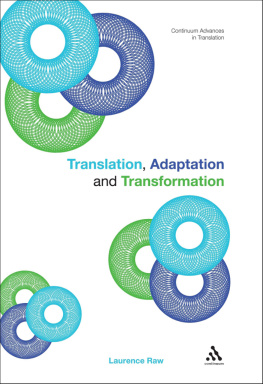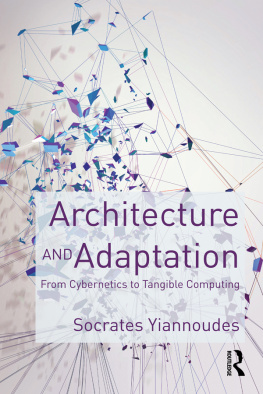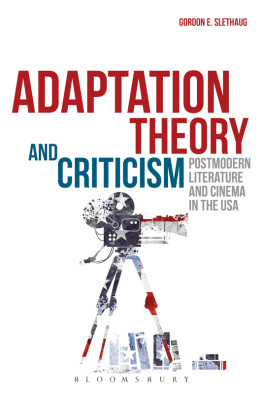A Theory of
Adaptation
A Theory of Adaptation explores the continuous development of creative adaptation, and argues that the practice of adapting is central to the storytelling imagination. Linda Hutcheon develops a theory of adaptation through a range of media, from film and opera, to video games, pop music and theme parks, analysing the breadth, scope and creative possibilities within each.
This new edition is supplemented by a new preface from the author, discussing both new adaptive forms/platforms and recent critical developments in the study of adaptation. It also features an illuminating new epilogue from Siobhan OFlynn, focusing on adaptation in the context of digital media. She considers the impact of transmedia practices and properties on the form and practice of adaptation, as well as studying the extension of game narrative across media platforms, fanbased adaptation (from Twitter and Facebook to home movies), and the adaptation of books to digital formats.
A Theory of Adaptation is the ideal guide to this ever evolving field of study and is essential reading for anyone interested in adaptation in the context of literary and media studies.
Linda Hutcheon is Distinguished University Professor Emeritus of English and Comparative Literature at the University of Toronto, Canada.
Siobhan OFlynn is Senior Lecturer in the Canadian Studies Program at the University of Toronto, Canada and Adjunct Graduate Faculty in the OCADU/CFC Media Lab Digital Futures Masters Program at the Canadian Film Centres Media Lab.
A Theory of
Adaptation
Second edition
Linda Hutcheon with
Siobhan OFlynn

First edition published 2006
by Routledge
This second edition published 2013
by Routledge
2 Park Square, Milton Park, Abingdon, Oxon OX14 4RN
Simultaneously published in the USA and Canada
by Routledge
711 Third Avenue, New York, NY 10017
Routledge is an imprint of the Taylor & Francis Group, an informa business
2006 Taylor & Francis Group, LLC
2013 Linda Hutcheon; Siobhan OFlynn, revised edition epilogue
The right of Linda Hutcheon and Siobhan OFlynn to be identified as authors of this work has been asserted by them in accordance with sections 77 and 78 of the Copyright, Designs and Patents Act 1988.
All rights reserved. No part of this book may be reprinted or reproduced or utilised in any form or by any electronic, mechanical, or other means, now known or hereafter invented, including photocopying and recording, or in any information storage or retrieval system, without permission in writing from the publishers.
Trademark notice: Product or corporate names may be trademarks or registered trademarks, and are used only for identification and explanation without intent to infringe.
British Library Cataloguing in Publication Data
A catalogue record for this book is available from the British Library
Library of Congress Cataloging in Publication Data
Hutcheon, Linda, 1947
A theory of adaptation / Linda Hutcheon with Siobhan OFlynn. -- 2nd ed.
p. cm.
Includes bibliographical references and index.
1. Literature--Adaptations. 2. Music and literature. I. OFlynn, Siobhan. II. Title.
PN171.A33H88 2012
809--dc23
2012011960
ISBN: 978-0-415-53937-1 (hbk)
ISBN: 978-0-415-53938-8 (pbk)
ISBN: 978-0-203-09501-0 (ebk)
Adapting is a bit like redecorating.
Alfred Uhry
The content of a movie is a novel or a play or opera.
Marshall McLuhan
After all, the work of other writers is one of a writers main sources of input, so dont hesitate to use it; just because somebody else has an idea doesnt mean you cant take that idea and develop a new twist for it. Adaptations may become quite legitimate adoptions.
William S. Burroughs
[T]he theatre itself is much less high-minded than those who keep a watchful eye on its purity; the stage has always cheerfully swiped whatever good stories were going.
Philip Pullman
C ONTENTS
I LLUSTRATIONS
Preface to the second edition
Epilogue
P REFACE TO THE FIRST EDITION
If you think adaptation can be understood by using novels and films alone, youre wrong. The Victorians had a habit of adapting just about everythingand in just about every possible direction; the stories of poems, novels, plays, operas, paintings, songs, dances, and tableaux vivants were constantly being adapted from one medium to another and then back again. We postmoderns have clearly inherited this same habit, but we have even more new materials at our disposalnot only film, television, radio, and the various electronic media, of course, but also theme parks, historical enactments, and virtual reality experiments. The result? Adaptation has run amok. Thats why we cant understand its appeal and even its nature if we only consider novels and
films.
Anyone who has ever experienced an adaptation (and who hasnt?) has a theory of adaptation, conscious or not. I am no exception. A Theory of Adaptation is one attempt to think through not only this continuing popularity but also the constant critical denigration of the general phenomenon of adaptationin all its various media incarnations. Whether it be in the form of a videogame or a musical, an adaptation is likely to be greeted as minor and subsidiary and certainly never as good as the original. This critical abuse is one of the provocations of this study; the other is the sheer number and kinds of adaptations both across genres and media and also within the same ones. Most of the work done on adaptation has been carried out on cinematic transpositions of literature, but a broader theorizing seems warranted in the face of the phenomenons variety and ubiquity. Adaptations seem so common, so natural, so obviousbut are they?
On a more personal note, I have learned that obsessions (intellectual and other) rarely disappear, even if they do mutate. There have been common threads in my past critical work that reappear in this book. First, I have always had a strong interest in what has come to be called intertextuality or the dialogic relations among texts, but I have never felt that this was only a formal issue. Works in any medium are both created and received by people, and it is this human, experiential context that allows for the study of the politics of intertextuality. This has also always been my concern, and it continues to be so in this book. A second constant has been a perhaps perverse de-hierarchizing impulse, a desire to challenge the explicitly and implicitly negative cultural evaluation of things like postmodernism, parody, and now, adaptation, which are seen as secondary and inferior.
Once again, I have tried to derive theory from practiceas wide a cultural practice as possible. I have used many different examples here in order to make it easier for readers to hook onto some familiar work and thus onto my theorizing from it. My method has been to identify a text-based issue that extends across a variety of media, find ways to study it comparatively, and then tease out the theoretical implications from multiple textual examples. At various times, therefore, I take on the roles of formalist semiotician, poststructuralist deconstructor, or feminist and postcolonial demythifier; but at no time do I (at least consciously) try to impose any of these theories on my examination of the texts or the general issues surrounding adaptation. All these perspectives and others, however, do inevitably inform my theoretical frame of reference. So, too, does the very fact that, as Robert Stam has noted (2005b: 812), all the various manifestations of theory over the last decades should logically have changed this negative view of adaptation. There are many shared lessons taught by Kristevan intertextuality theory and Derridean deconstruction and by Foucauldian challenges to unified subjectivity and the often radically egalitarian approach to stories (in all media) by both narratology and cultural studies. One lesson is that to be second is not to be secondary or inferior; likewise, to be first is not to be originary or authoritative. Yet, as we shall see, disparaging opinions on adaptation as a secondary modebelated and therefore derivativepersist. One aim of this book is to challenge that denigration.
Next page
